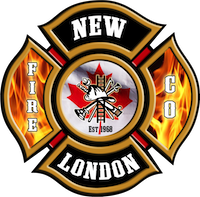Motor Vehicle Extraction
Vehicle extrication is the process of removing a vehicle from around a person who has been involved in a motor vehicle accident, when conventional means of exit are impossible or inadvisable. A delicate approach is needed to minimize injury to the victim during the extrication. This operation is typically accomplished by using chocks and bracing for stabilization and hydraulic tools, including the Jaws of Life. Standards and regulations can be found in NFPA 1670 and 1006. The basic extrication process consists of, but is not limited to, six steps:
- the protection of the accident scene, to avoid a risk of another collision (marking out the scene with cones or flares (not advisable if gasoline is leaking), lighting) and of fire (e.g. switching off the ignition, putting vehicle in park, disconnecting the battery, placing absorbing powder on oil and gasoline pools, fire extinguisher and fire hose ready to use);
- patient triage and initial medical assessment of the patient by a qualified medical rescuer;
- securing the vehicle (see cribbing), to prevent the unexpected movement (e.g. falling in a ditch), and the movements of the suspension, either of which could cause an unstable trauma wound or cause injury to the rescuers; a vehicle should never be moved, it should always be secured.
- the opening of the vehicle and the deformation of the structure (such as removing a window) to allow the intervention of a first responder, of a paramedic or of a physician inside the vehicle to better assess the patient and begin care and also to release a possible pressure on the casualty
- removal of a section of the vehicle (usually the roof or door) to allow for safe removal of the accident victim, especially respecting the head-neck-back axis (rectitude of the spine);
removal of the person from the vehicle - In less complicated cases, it is possible to extricate the casualty without actually cutting the vehicle, such as removing a person from the side door or another part of the vehicle.

